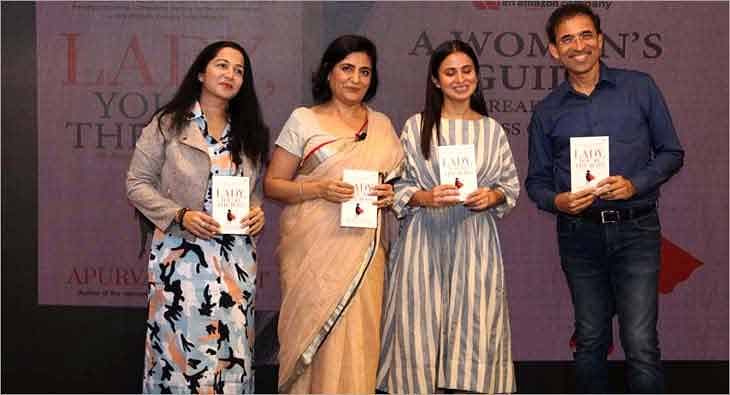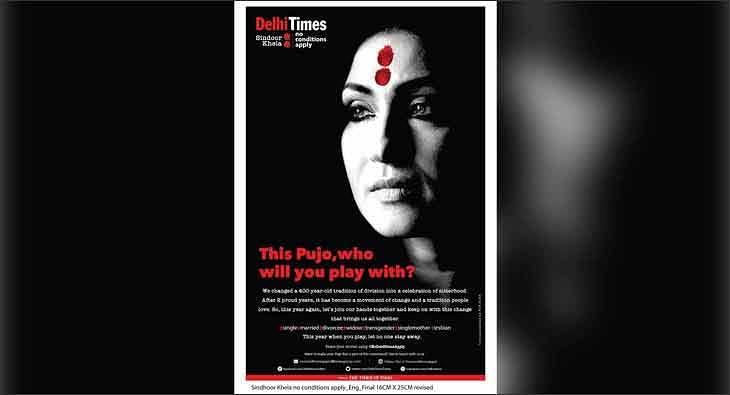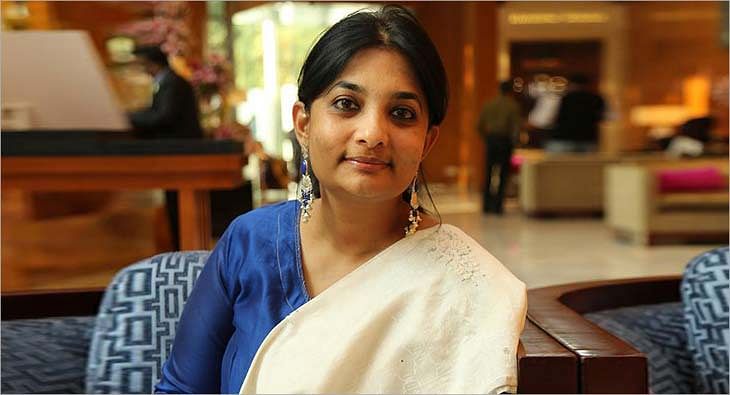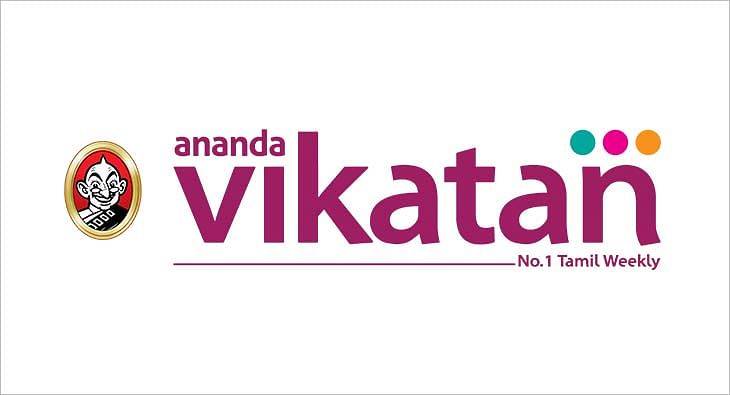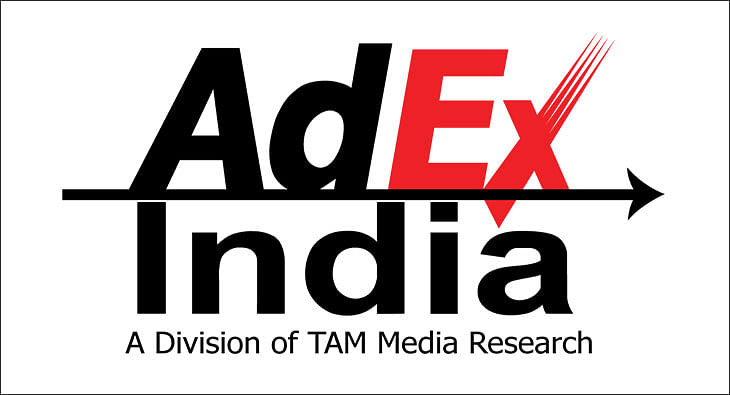PM Modi explains India's Daughter ban in Time Magazine exclusive
"In so far as freedom of speech is concerned, there is absolutely not an iota of doubt in terms of our commitment and our belief in that," says PM Narendra Modi in an interview given to Time's Nancy Gibbs, Zoher Abdoolcarim and Nikhil Kumar

Post his election victory, PM Narendra Modi has only given select few interviews to media, including a TV interview with India TV’s Rajat Sharma and a print interview given to HT’s Sanjoy Narayan and Shishir Gupta. PM Modi has given an exclusive interview to Time Magazine’s Editor Nancy Gibbs, Asia Editor Zoher Abdoolcarim and South Asia bureau chief Nikhil Kumar.
In an earlier story, we had said that PM met with his cabinet colleagues and suggested doing interviews to highlight the work his government has been doing after coming into power. http://www.exchange4media.com/59919_fm-jaitley-and-pm-modi-meet-select-editors-over-the-weekend.html
In this particular interview, PM Modi talks about economic reforms, India’s religious diversity, US-India relations, why the Nirbhaya documentary was banned among other things.
Below are a few excerpts from the interview:
TIME: Prime Minister, you have talked about the economic and development reforms that you have been introducing in India, but there are other benchmarks of progress. President Obama said earlier this year that for India to succeed, it is critical that the nation does not splinter along religious lines. What would you make from President Obama’s remarks?
Modi: India is a civilization with a history that is thousands of years old. If you analyze the history of India carefully, you will probably not come across a single incident where India has attacked another country. Similarly you will not find any references in our history where we have waged war based on ethnicity or religion. The diversity of India, of our civilization, is actually a thing of beauty, which is something we are extremely proud of. Our philosophy of life, something that we have lived for thousands of years, is also reflected in our constitution. Our constitution has not come out of any abstract insularity. It essentially reflects our own civilizational ethos of equal respect for all religions. As Indian scriptures say, “Truth is one but sages call it by different names”. Similarly, Swami Vivekananda, when he travelled to Chicago for the World Congress of Religions, had said that respecting religions is not simply a question of universal tolerance; it is a question of believing that all religions are true. So it is a positive approach and aspect that India and Indian civilization take towards religion. If you look at one of the micro minorities of the world, the Parsi community, it has probably flourished the maximum in India. One of our Chiefs of Army Staff has been from the Parsi community. One of our biggest industrialists is from the Parsi community. A Chief Justice of the Supreme Court was from this micro minority community. So for us, the acceptance of all religions is in our blood, it is there in our civilization. It is ingrained in our system to work together, taking all the religions along with us.
My philosophy, the philosophy of my party and the philosophy also of my government is, what I call ‘Sabka Sath, Sabka Vikas’, which essentially means, “Together with all, progress for all”. So, the underlying philosophy and the impulse of that particular motto is to take everybody together and move towards inclusive growth.
TIME: Prime Minister, if I could go back to your election last year. A key thing and the most important was the economy that was spoken about. But here on, a lot of investors have begun to ask questions about the pace of reform, is it fast enough? That the economy basically benefitted from falling oil prices… What you make of those questions about the pace at which you have reformed and what reforms you are planning as you are going to your second year?
Modi: If you were to pick up the news papers for the period March-May 2014 last year and read them, you will actually get the context and key aspects of the context in which we were approaching the elections at that time. One of which was that nothing seemed to be happening in the Government. There seemed to be a complete policy paralysis at that time. Two, corruption had spread throughout the system. Three, there was no leadership; it was a weak government at the centre. That was the context and the background in which I was elected. My election, my government’s coming into power last year in 2014, should be viewed in the context of the developments over the last ten years in the country before May 2014. So you need to see ten years of the last government versus ten months of my government.
You will actually see that, internationally, the whole world is, once again, excited and enthusiastic about India and the opportunities that India represents. Another way to look at it is that, at the start of the 21st century, the term BRIC was coined to represent the four major emerging economies. The assessment was that the BRIC countries will drive international economic growth. Six-seven years before 2014, a view started emerging that ‘I’ in the BRIC had perhaps become less relevant or perhaps even a drag on the BRIC grouping.
In the last 10 months, the ‘I’ has reclaimed its position in the BRICS. Internationally, whether it is the IMF, the World Bank, Moody’s or other credit agencies, they are all saying in one voice, that India has a great economic future. It is progressing at a fast pace and has again become a factor of growth and stability in the international economic system. India is now one of the fastest growing economies in the world.
The last ten months clearly prove that so far as the expectations of the people are concerned, both in the country and internationally, we are moving very rapidly to fulfil those expectations.
I have in my mind a very clear outline of the framework of what we are going to do in the next five years. What we have done in the last one year is precisely as per that plan. And in the next four years, we have step-by-step measures that would unfold as we go along. So far as the reform process in the last eleven months is concerned, it is not simply a question of policy reforms that my government has taken. We have also undertaken focused administrative reforms. To establish (i) ease of doing business; (ii) making government more accountable; (iii) reforms at the level of technology and governance; (iv) reforms at all layers of the government, whether it’s local government or state government or central government. We have essentially taken the reform process to an entirely different level where both the Federal and the state level respond through a policy-based and administrative reform system.
The biggest reform since India’s independence in the field of taxation that is coming up is the GST and it is our expectation that we would start implementing it from the 2016 fiscal year.
Another example is increasing the Foreign Direct Investment cap in the field of insurance to 49%. This was stuck for the last 7 – 8 years and was not making any progress. We ensured that it was passed by the parliament within the first year of our government.
TIME: One of the aspects, one of the pillars of a democracy is freedom of speech. Earlier this year, the authorities in India banned a documentary about the terrible rape case that took place in December of 2012. Why did the authorities do that and what are to you the limits of free speech? Do you think free speech should have some limits?
Modi: There are two different things which are dealt in this question and I will try to address them both. But, first in a somewhat lighter vein, if I could just recount a well-known episode about Galileo. He had propounded the principles of revolution of the earth around the sun but in the societal paradigm at that particular time, those principles were against what was enshrined in the Bible and a decision was taken to imprison Galileo at that time.
Now India is a civilization where the principle and philosophy of sacrifice is ingrained as part of our upbringing. If you take that as a background and look at our history, there used to be another great thinker of the time called Charvaka who propounded a theory of extreme hedonism which was contradictory to the Indian ethos. He essentially said that “You do not have to worry about tomorrow, just live, eat, make merry today”. But even he with those extreme thoughts, which were totally contradictory to the Indian ethos, was equated to a sage and accommodated and given space to express his views in the Indian society.
So in so far as freedom of speech is concerned, there is absolutely not an iota of doubt in terms of our commitment and our belief in that.
If you look at the issue related to the telecast of the documentary that you referred, it is not a question of freedom of speech, it is more a legal question. It has two or three aspects. One aspect is that the identity of the rape victim should not be revealed which would have happened if this interview was allowed to be telecast. Two, the case is still sub judice and the telecast which features the interview of the person who is alleged to have committed the crime could have impacted the judicial process. Three, it is also our responsibility to ensure protection of the victim. If we had allowed such a thing to happen, in effect, we would have violated the dignity of the victim. So I do not think it is a question of freedom of speech, it is more a question of law and respecting the victim and the judicial processes in this particular case. In so far as freedom of speech is concerned, as I mentioned earlier, there is absolutely no issue. It is something that we greatly respect as an important aspect of our democratic values.
Read more news about (internet advertising India, internet advertising, advertising India, digital advertising India, media advertising India)
For more updates, be socially connected with us onInstagram, LinkedIn, Twitter, Facebook Youtube & Whatsapp
DNA to shut down Mumbai and Ahmedabad print editions
The publication said it will now be 'focussing on its online brand which has grown manifold in the digital space'
Daily News and Analysis (DNA) on Wednesday announced that it will be shutting down its print editions in Mumbai and Ahmedabad. In February this year, the Zee Media Group-owned English daily shut down the Delhi edition. The Pune and Bengaluru editions were shut in 2014.
Announcing the decision in an ad in the newspaper, it was said DNA will be focussing on its online brand which has grown “manifolds in the digital space”.
It said that its “readers especially the younger audience preferred reading on their mobile phones. “We thank each one of you for the print readership over the past 14 years. The print publication for Mumbai and Ahmedabad will be ceased effective 10th October 2019, Thursday till further notice,” read the announcement.

Talking about the development, a former editor of the newspaper shared, “They conducted a town hall meeting to update their existing employees about the news of shutdown.”
Read more news about (internet advertising India, internet advertising, advertising India, digital advertising India, media advertising India)
For more updates, be socially connected with us onInstagram, LinkedIn, Twitter, Facebook Youtube & Whatsapp
I hope my book helps women maximise their potential: Apurva Purohit
Purohit, President, Jagran Prakashan, launched her new book 'Lady You’re the Boss' at an exclusive gathering attended by Madhukar Kamath, Shashi Sinha and Saugata Gupta, among others
Apurva Purohit, President, Jagran Prakashan, launched her new book 'Lady You’re the Boss' at an exclusive gathering of industry bigwigs and friends at the Arth Lounge in Khar, Mumbai on September 26. The book follows Purohit's very successful first book, 'Lady, You’re not a Man – The Adventures of a Woman at Work', which is in its 21st edition now.
Published by Westland Publications, an Amazon company, 'Lady You're the Boss' draws from Purohit’s personal experiences and lays down a plan of action for women to persevere and reclaim their true potential, without minimizing themselves in any way.
It addresses the process of working women transitioning from mid-management to senior leadership roles and aims to empower women across sectors and organizations, encouraging them to work their way to the corner office, consciously defeating those internal and external biases that stop many a working woman from chasing her dreams.
Actor Divya Dutta, cricket commentator Harsha Bhogle and Purohit herself read out chapters from the book at the event while Karthika VK of Westland Publications spoke of the experience of publishing the book.
Talking about the book, Saugata Gupta, MD and CEO, Marico, who was present at the launch, said, “We are very lucky that there are many women in the Indian corporate world who can break the glass ceiling. This book will be an interesting read. I have a daughter who’s very achievement-oriented too and I always encourage diversity in the workplace."
“I’m really looking forward to reading this book, going by the excerpts Apurva and the rest have read out today. Most importantly, it’s not pretentious, but sounds like something that would inspire everyone," said Abhijit Avasthi, Co-founder, Sideways.
Thanking the audience present at the launch, Purohit said, “I really appreciate that all my friends, colleagues and family are present here. Thanks also to my wonderful team. I’m hoping that this book will help all kinds of women realise their worth. When young girls grow up, they don’t know how to stand up because they sometimes feel incompetent. I’m hoping that 'Lady You’re the Boss' will help women maximise their potential and live up to all the dreams they’ve had.”
Madhukar Kamath, Emeritus, DDB Mudra, Shalini Kamath of SK & Associates, Vivek Sharma and Bharat Puri of Pidilite Industries, Shashi Sinha of IPG Mediabrands India, Ramesh Narayan of IAA, Pawan Bansal of Jagran Engage, Kartik Kalla of Radio City, Joe Thaliath of FCB Interface, Anil Viswanathan of Mondelez Foods India and Sanjay Purohit, Group CEO, Sapphire Foods (who is married to Apurva Purohit) were among those present at the event.
Read more news about (internet advertising India, internet advertising, advertising India, digital advertising India, media advertising India)
For more updates, be socially connected with us onInstagram, LinkedIn, Twitter, Facebook Youtube & Whatsapp
TOI announces 3rd edition of #NoConditionsApply – Sindoor Khela campaign
Conceptualized to promote gender equality, the campaign calls for inclusion of women in celebrations and combats discrimination they face in terms of caste, marital status and sexual orientation
Two years ago, an initiative by The Times of India reinterpreted a 400-year-old tradition with the award-winning campaign #NoConditionsApply – Sindoor Khela. Conceptualized to promote gender equality, the campaign calls attention to the issue of inclusion of women in celebrations and combats the discrimination that they face in terms of their caste, creed, marital status, sexual orientation etc. The campaign won accolades in India and abroad.
In its 3rd year, #NoConditionsApply – Sindoor Khela initiative aims to reach the corners of the nation and beyond spreading this message of inclusive celebration that celebrates womanhood sans any discrimination based on ‘labels’ and societal barriers.
The campaign that was conceptualized in 2017 and was organized for one pandal in Kolkata. The Times of India along with the puja committee of Tridhara Sammilani, which is also one of the oldest and most prestigious puja pandals in Kolkata, organized the first ever inclusive Sindoor Khela – which invited widows and transgenders to be a part of this grand celebration.
What started with a single pandal celebration, went on to become a national movement with participation from over 100 pandals in 2018. The campaign hopes the movement will achieve the status of a global phenomenon this year. Owing to the widespread popularity of the campaign in its previous two editions, TOI has been getting several requests of extending the campaign to newer cities.
This year, the campaign spreads its wings across the country and beyond, and #NoConditionsApply encourages readers to host an inclusive Sindoor Khela and celebrate along with all sisters irrespective of the labels society may have attached to them.
The campaign urges patrons to bring a sister along to the celebration – sister being used metaphorically for any women they know of in their family, friend and neighbourhood, who have been shunned to be a part of the celebration.
The campaign asks the patron to invite their lesbian sister, transgender sister, widowed sister, divorcee sister, single mother sister to the celebrations this year. Since its inception, the campaign has witnessed phenomenal support worldwide from people who wanted to offer their support and be a part of the movement.
Garnering support from Kolkata’s agents of change - Rituparna Sengupta, Gargee Roychowdhury, Manobi Bandyopadhyay and Sohini Sengupta the campaign extends an invitation to women to #BringaSisterAlong this Pujo. With the phenomenal success of its previous editions, garnering 718 mn reach over the past 2 years, the latest edition aims to extend inclusion not just in Sindoor Khela but across all celebrations as part of the fabric of our tradition.
Commenting on the launch, Sanjeev Bhargava, Director, Brand TOI, said, “The #NoConditionsApply – Sindoor Khela campaign is extremely special to all of us, owing to the change that it has fostered across the various communities in India. While it is contextualized to a Bengali cultural event, the message of inclusive celebration and sisterhood resonates with everyone. We have always left no stone unturned in spreading the message across the various strata of society. Our success lies not in the awards that this campaign has garnered but in the fact that the initiative has grown from strength to strength and is rapidly becoming a symbol of inclusiveness. We are grateful for the overwhelming response we have received from women across the country who have shared their celebrations with us. The fact that it is back for the third time is testament to the widespread movement that the campaign is now. I thank everyone who has supported us in making the change happen.”
Speaking about the campaign, Swati Bhattacharya, Chief Creative Officer, FCB Ulka said, “This piece of work has been a big emotional milestone for me personally. This bloodless coup of a campaign shows the world that joy love friendship and beauty can help break down walls an inclusive Sindoor Khela shows us that sisterhood is one of biggest ideas that can change the world we live in.”
Read more news about (internet advertising India, internet advertising, advertising India, digital advertising India, media advertising India)
For more updates, be socially connected with us onInstagram, LinkedIn, Twitter, Facebook Youtube & Whatsapp
We’re aggressively driving partnerships across the ecosystem: Archana Anand, ZEE5 Global
Anand, Chief Business Officer, ZEE5 Global, tells us about the platform's partnership with Google and the markets the brand is most upbeat about
From being one of the most downloaded OTT apps in places like Bangladesh and Sri Lanka to curating content especially for the global audience, ZEE5 is upbeat about their global roadmap. Archana Anand, Chief Business Officer at ZEE5 Global talks about the markets the brand is most upbeat about. ZEE5 also brought Google on board to help them achieve maximum reach globally. Google did a thorough market analysis of the audiences interested in the content that was owned and created by ZEE.
ZEE5 seems to have ranked as the No 1 entertainment app in key markets within weeks of its launch. Can you please elaborate on the markets?
Bangladesh and Sri Lanka were among the key SAARC markets where we galloped to the No 1 position, that too within a few weeks of launch. We launched ZEE5 across 190+ markets in Oct 2018 and rolled out our marketing campaign a few weeks later in Jan 2019 across select markets in APAC. Our immediate priority was to establish ourselves firmly as the largest and most comprehensive destination for Indian entertainment, especially in SAARC countries where our content has the highest direct affinity. We used inputs from local market specialists and extensive market insights to create very specifically targeted media campaigns basis for various benchmarks to achieve quick market penetration with rapid awareness and usage. All this and more resulted in ZEE5 becoming the No. 1 entertainment app across key markets in SAARC including Bangladesh and Sri Lanka within just a few weeks of launch, and now we look to replicate this success story across other markets soon too.
You are also one of the first OTT platforms from India to customize Indian content for global audiences? Tell us about the markets you are upbeat about? What is the kind of content you are curating for the global audience?
As we deepened our presence across international markets, we realized that the huge love for Bollywood and Indian TV Shows is not restricted to Indians or even South Asians abroad, but is also huge among mainstream audiences. This was also supported by the insights from our local linear channel teams. Therefore, in April 2019, we launched a range of Indian content including Bollywood movies dubbed across 5 international languages, Bahasa Malay, Thai, Indo Bahasa, German and Russian, expanding our target audience beyond South Asians to mainstream audiences too across these markets, and while its early days, we are seeing a great response.
Any particular reason why Middle East is a strong market and you have done so many associations there?
The Middle East is a very exciting market for us as there is a huge Indian and South Asian community there which is already familiar with and loves our content across languages like Hindi, Malayalam, Tamil, Bengali, and others. We have a strong bouquet of content that’s striking a chord among the South Indian community in the market. There’s also a huge demand for Bollywood movies in the Middle East among local audiences too and our catalogue of 2000+ movies as well as our Originals, many of which have Bollywood stars, caters superbly to that demand. Our recent launches like Uri, Simmba, and Kedarnath among others have done really well as have our Originals like Kaafir, The Final Call, and Poison etc, n fact the Middle East was the first of the three markets that we kicked off our new campaign ‘Full On Entertainment’ in, through various on-ground events. Our recent partnerships with Eurostar and the LuLu Group are only the first of many and we have some very key telco partnerships also in the pipeline.
You have also roped in Google as a consulting partner to build their global strategy and execution plan. Tell us more about the partnership. What exactly would be Google’s role?
Launching globally across 190 countries required an in-depth understanding of the digital audiences across the markets, especially the far-flung ones. Prioritizing our key markets to ensure that we drive clear wins out of them was going to be an important task at hand for us and Google was the obvious choice for us to partner with for our global rollout. As a consulting partner, Google did a thorough market analysis of the audiences interested in the content that was owned and created by ZEE and that threw up some very key insights. Those, along with inputs from local market specialists and our own business teams were used to create media plans and strategies basis the benchmarks.
Every OTT platform now also has telecom partners, while we know you have partnerships with Airtel in India do you have any such tie-ups with international players too since you are aggressively promoting your platform globally?
Absolutely - we’re very aggressively driving partnerships across the ecosystem. Since our launch in October 2018, we have built out a slew of strategic partnerships in every key market like Dialog in Sri Lanka, Celcom in Malaysia, Robi Axiata in Bangladesh and others. We’ve also partnered with Apigate for multiple markets, and with Zeasn and Netrange for their Smart TV range. We’re also building out a strong offline presence in key markets like the Middle East with our partnerships with key retailers like the LuLu Group and Eurostar. We have multiple partnership announcements also coming up over the next several weeks including our first in Australia.
Read more news about (internet advertising India, internet advertising, advertising India, digital advertising India, media advertising India)
For more updates, be socially connected with us onInstagram, LinkedIn, Twitter, Facebook Youtube & Whatsapp
Vikatan Group revamps print portfolio
As part of its restructuring exercise, the print bouquet has been realigned as core magazines and special interest magazines
As part of its restructuring exercise, the Vikatan group has revamped its print portfolio with a sharper focus towards its content reorientation. The print bouquet has been realigned as core magazines and special interest magazines.
The core magazine bouquet consists of the 93-year-old ‘Ananda Vikatan’, weekly magazine in Tamil, which has a Total Readership (TR) of 33.94 Lakhs (IRS 2019, Q2); ‘Aval Vikatan’, fortnightly women’s Tamil magazine, with readership (TR) of 13.26 Lakh (IRS 2019, Q2); and ‘Junior Vikatan’, bi-weekly, Tamil Socio-political magazine.
The special interest magazine bouquet includes, ‘Nanayam Vikatan’, (TR of 3.46 Lakh / IRS 2019Q2), a personal finance & entrepreneurship magazine; ‘Pasumai Vikatan’, (TR of 8.55 Lakh / IRS 2019Q2), a magazine devoted & focussed to the organic farming and inclusive farm practices; ‘Motor Vikatan’, (TR 3.72 Lakh / IRS 2019Q2), auto magazine in Tamil; ‘Sakthi Vikatan’, (TR of 4.88 Lakh / IRS 2019, Q2), the spiritual magazine about the religious culture and heritage of the land, and ‘Aval kitchen’, the brand extension of ‘Aval Vikatan’ Magazine focusing on food, recipe and kitchen.
In the process, two of its print titles, ‘Vikatan Thadam’ & ‘Doctor’ Vikatan has been shelved from September 2019, while ‘Aval Manamagal’, the quarterly bridal magazine has been converted as an advertiser driven publication in the B2B route and ‘Chutti Vikatan’, the children’s magazine will take a completely new format to directly engage with schools and children.
Their content on literature, health & wellness, bridal fashion & shopping, and children-focussed content will be seamlessly integrated in print & digital platforms.
“After immense deliberations on content and market acceptability, we have restructured our print portfolio and two titles have been shelved and amongst two others, ‘Aval Manamagal’ has been migrated to AFP model, while ‘Chutti Vikatan’ has been contextualized to the children & school ecosystem” said, B Srinivasan, Managing Director, Vikatan Group, “The content will be seamlessly integrated with the rest of the magazines. Vikatan management remains fully committed to all other group magazines.”

Read more news about (internet advertising India, internet advertising, advertising India, digital advertising India, media advertising India)
For more updates, be socially connected with us onInstagram, LinkedIn, Twitter, Facebook Youtube & Whatsapp
Print sees 8% rise in ad volume in Q2 2019 compared to Q1 2019: TAM Adex
There has been a 15% rise in ad volume from the Education sector in Q2 2019
While there has been an 8% indexed growth from Q1 to Q 2 2019 in the Print medium, it’s the Education sector that has increased its share dramatically as per TAM Adex data. From 11% in the first quarter, the sector has managed to increase its share of ad volumes to 26% in the second quarter. However, Auto declined to 13% from 17% while Services went down from 18% to 14%.
If we compare the first half of 2018 to the first half of 2019, Education has managed to take the top spot in both the years. Although the shares went down by 1% from 2018 to 2019, it is still the top sector. Auto gained 1% more share bringing it to 16% from 15% in 2018. Ad volumes have dropped considerably from H1 2018 to H1 2019 by 6%. All other sectors have gone down by 1%.
Allen Career Institute and Aakash Medical College Maruti Car range, Hero Two-wheelers, Indira Infertility & Test Tube Baby Centre and Homecare International are the major brands in the first half of this year. However, the overall indexed growth of ad volumes has fallen by 7% in the first half of 2019 compared to H1 2018.
Read more news about (internet advertising India, internet advertising, advertising India, digital advertising India, media advertising India)
For more updates, be socially connected with us onInstagram, LinkedIn, Twitter, Facebook Youtube & Whatsapp
Delhi High Court restrains publication of defamatory content against EbixCash by Viceroy
The Court issued a dynamic injunction restraining publication or republication of certain defamatory articles against EbixCash by US-based Viceroy Research Group
The Delhi High Court has issued a dynamic injunction order restraining publication or republication of the contents of certain defamatory articles against EbixCash and Ebix (Nasdaq:Ebix), by US- based Viceroy Research Group, Fraser Perring and other principals of Viceroy.
The court also directed the Times Group's ET Prime, to take down an article published July 31, 2019, since the article was largely based on statements made by Viceroy. The order also directed all the defendants including Viceroy, Fraser and all its principals not to publish any such content themselves or through their affiliates or agents or any other person acting on their behalf.
The issuance of a dynamic injunction by the Delhi High court is to be specially noted as a it implies that the next time any media or publication quotes Viceroy or Fraser or any of the contents of the banned piece by Delhi High court - “Goodwill hunting”; EbixCash will not need to approach the judge but just to reach out to the Registrar of court for taking down any such new article.
Delhi High Court had earlier issued an order on 8th May 2019, directing Twitter and Google to take down certain articles published by Viceroy Research Group.
In May 2019, EbixCash had approached the High Court with a plea that Viceroy Research Group had published certain articles on its website which contained defamatory information about the former. EbixCash had alleged that Viceroy Research, which holds “short selling” positions in the company and its sister concerns, was using these defamatory articles to drive down the price of the company, and thereby making profit from it.
Read more news about (internet advertising India, internet advertising, advertising India, digital advertising India, media advertising India)
For more updates, be socially connected with us onInstagram, LinkedIn, Twitter, Facebook Youtube & Whatsapp














 Share
Share